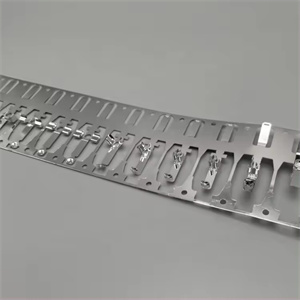Tempering Of Progressive Die Stamping
In the Progressive Die Stamping process, tempering is an important heat treatment step used to improve the mechanical properties of metal materials. Progressive Die Stamping is an efficient stamping technology used to produce large quantities of metal parts with similar shapes and sizes. This process typically involves multiple continuous stamping operations, each performed at a separate mold station.
The main function of tempering in Progressive Die Stamping is to eliminate the internal stress and brittleness generated during the quenching process, while improving the toughness and ductility of the material. This helps to ensure that the parts have better durability and reliability during subsequent processing and use.
Choosing the appropriate tempering temperature is crucial for the performance of Progressive Die Stamping components. The tempering temperature is usually determined based on the type of material used, thickness, required mechanical properties, and processing requirements. Different materials have different tempering temperature ranges, and within this range, selecting the appropriate temperature can optimize the performance of the material.
Generally speaking, the tempering temperature can be divided into low temperature tempering, medium temperature tempering, and high temperature tempering. Low temperature tempering is mainly used to maintain the high hardness and wear resistance of materials, and is suitable for stamping parts that require high hardness. Medium temperature tempering can achieve good toughness and plasticity of materials, while maintaining a certain hardness, making it suitable for stamping parts that require comprehensive mechanical properties. High temperature tempering is mainly used to eliminate internal stress, improve the toughness and ductility of materials, and is suitable for stamping parts that require high toughness and good plasticity.
In the Progressive Die Stamping process, tempering is usually carried out after all stamping operations have been completed on the part. This can ensure that the parts have the best mechanical performance in their final state. However, in some cases, local tempering may also be necessary at a certain stage of the stamping process to optimize material performance or meet specific processing requirements.
Tempering is an indispensable part of the Progressive Die Stamping process, which is crucial for ensuring the performance and reliability of the parts. By selecting appropriate tempering temperature and process parameters, the mechanical properties of materials can be optimized, and the quality and durability of parts can be improved.
